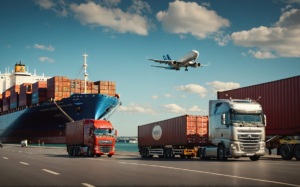The progress of the Chinese supply chain is both exceptional and unusual. In four decades, a country with a history of almost 5,000 years has abandoned its rural position to become the largest force in the East.
The country as a whole has undergone profound transformations. The culture is more Western in nature, and they have lifted 740 million people out of poverty while also building megacities. The supply chain, unavoidably, has kept up with the march and acted as the backbone of this progress.
There has not been a crisis as severe as the one we are currently witnessing since then. China has handled the matter in its own way, which has a number of implications for the supply chain.
Chinese supply chain solutions
The closure of ports and the lockdown of megacities have posed significant challenges to Chinese expansion. Meanwhile, China’s government has unveiled the 14th 5-year plan to modernize the country’s transportation sector.
The document provides methods for constructing and strengthening roads, trains, ports, and waterways, as well as involving the creation of new technologies. The Chinese supply chain now has eight high-speed railways (4 north-south and 4 east-west) that have relieved congestion on the normal speed trains.
The Chinese supply chain has several obstacles, including urban traffic congestion, low-quality warehouses and transportation, and skilled labor shortages. Innovation and technological advancement are significant weapons in the strategies to resolve any difficulties. Smart transportation, urban trains, multimodal freight transportation, and carbon-free automobiles are just a few examples of what’s on the horizon.
The expansion of the internet market is partly a gamble on the improvement of the eastern supply chain. Chinese intern demand is increasing in tandem with exports. This time, the plan covers more than simply megacities; it also includes interior regions. The overarching objective is to lower logistical costs while increasing efficiency. Costs will be reduced by implementing more flexible adjustment methods for railway freight pricing, lowering port shipping charges, and lowering logistics taxes and fees.
The strategy also encompasses the worldwide supply chain. Cooperation with ASEAN and the nations of the Maritime Silk Road, with an emphasis on improving logistical connectivity. The transportation development plan is linked to the Belt and Road Initiative, which aims to create infrastructure all across the world.



















